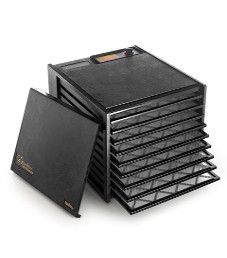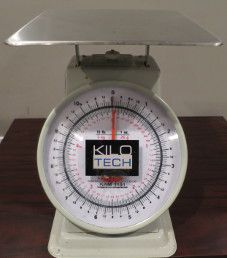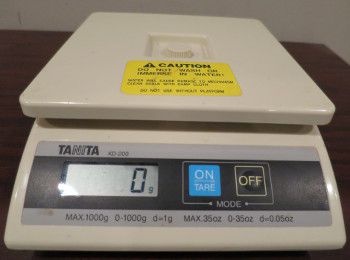INTRODUCTION
 The best advice I can give to anybody is to make your own jerky. It is not hard, but it entails physical labor and purchasing the necessary equipment. After you are done, there is always a sense of satisfaction where you have a temporary bounty of jerky.
The best advice I can give to anybody is to make your own jerky. It is not hard, but it entails physical labor and purchasing the necessary equipment. After you are done, there is always a sense of satisfaction where you have a temporary bounty of jerky.
It was not until 2007 that I tried homemade jerky, which I loved. Growing up, any jerky I tried tasted like burnt sandpaper. In late 2007, I was cooking strips of meat hung on toothpicks in my oven, which is technically not jerky. My stove’s minimum temperature allowed was 170 degrees Fahrenheit, but jerky should be dried at a maximum 160 degrees Fahrenheit, and never could get that dry, jerky texture. Some jerky makers dry their jerky at 190 degrees Fahrenheit or even higher.
In 2008, I bought a food dehydrator, which changed everything. The flavors I have experimented with are original, jalapeno, peppered, garlic, teriyaki, hot, hickory, barbecue, and curry. To get ideas on what ingredients to use with jerky, I started collecting bags of jerky, where I have accumulated a sizeable collection now via travels, local purchases, ordering online, and jerky bag submissions. In 2008, it was more like what ingredients not to put in jerky, but the jerky industry has since come a long way in generally making healthier jerky.
DEHYDRATOR vs. SMOKER
 There are two different basic ways of drying jerky: a smoker, a food dehydrator, or both. My focus will be on a food dehydrator. The model I got was Excalibur, which has nine trays. I can fit 16-17 pounds of beef, depending on how thick I cut the jerky, resulting in around 60 ounce bags. Upgrading to stainless steel trays is almost a must.
There are two different basic ways of drying jerky: a smoker, a food dehydrator, or both. My focus will be on a food dehydrator. The model I got was Excalibur, which has nine trays. I can fit 16-17 pounds of beef, depending on how thick I cut the jerky, resulting in around 60 ounce bags. Upgrading to stainless steel trays is almost a must.
CUT OF MEAT
Let’s assume we are making beef jerky. The leaner the beef, the better is always the rule. Fat is an enemy of jerky, which spoils first before the beef. When ordering meat, If ordering from a butcher, I specifically request that all the fat be trimmed off first. Some jerky makers intentionally leave fat, which can accentuate the natural beef jerky flavor to a fantastic level.
The best beef cuts are brisket, flank steak, inside round, or outside eye round. While brisket is generally considered the best cut of beef, I would choose outside eye round or inside round for the price.
KNIFE vs. SLICER
Some people prefer using a knife over a slicer. My preference would be a commercial grade slicer, which starts at around $500. Don’t settle on the smallest possible commercial slicer. You are slicing big slabs of meat. Using a cheap slicer can be very frustrating, and I have been using a knife for a while now. A knife to slice meat should be very thin and long.
Make sure you sharpen your knife before slicing jerky, making a world of difference. There is always some fat to trim.
INGREDIENTS
The combination of ingredients is endless. Your jerky will only be as good as your worst ingredient. While not required, I recommend buying high-quality products. For example, soya sauce can vary widely in quality and in some cases, very unhealthy in some of the cheap products. Another example is to use sea salt over table salt.
Common ingredients in jerky are salt, soy sauce, water, and sugar.
GARLIC
In my opinion, fresh garlic is a must for homemade jerky. Garlic can vary widely in taste, so you should try to buy local, organic, or high quality, which will not be cheap. Never use pre-peeled garlic or garlic from China, which will be dead in taste. I recommend using 1/4 pound of garlic for every 8 pounds of meat.
1) Get two equal-sized medium-large bowls
2) On a cutting board, break the garlic bulbs into cloves by smashing them with your hand
3) Put the individual garlic cloves in a bowl
4) Put the other bowl on top of the bowl containing the garlic to create a seal
5) Shake the two bowls up and down hard as you can
6) Collect all garlic cloves that fell out of the peel
7) Dispose of the empty peels
8) Repeat shaking
SALT
Salt, by far and away, is your largest preservative. As a rule of thumb, you should be using 9 grams of salt per pound of meat. Try to avoid using table salt. There are healthier alternatives, such as sea salt or Himalayan salt.
Note: If you use ingredients like soy sauce that contains salt, you should subtract that from your 9 grams of salt per pound. Ingredient lists do not specify exact quantities. Ingredient lists are ordered from the most used ingredient to the least ingredient used by weight. When I use soy sauce and Worcestershire in my marinade, I use 7 grams of salt per pound instead. If you want your jerky to last six months at least, use the standard 9 grams per pound of meat. If your jerky is consumed within 30 days, you can use 6 grams of salt per pound.
SODIUM NITRITE
I would only consider using sodium nitrite if you want your sealed bag to last over six months. I have never used sodium nitrite before in my homemade jerky. I have even opened up a bag of homemade jerky that was more than one year old with no issues. Not something that I would recommend.
Oxygen is the primary enemy of jerky. You want to seal your bags properly using a bag sealer if you want the jerky to last more than seven days, use a zip-locked bag.
Salt is the main preservative in jerky.
If you are intent on using sodium nitrite then I recommend using a cure, which is a mixture of table salt and sodium nitrite. Sometimes a cure is referred to as Prague powder.
BEEF JERKY RECIPE
Making jerky is not all that hard, provided you have the necessary equipment. Perfecting jerky is hard.
Here is an excellent tasting original recipe to try:
Beef, Tamari Soy Sauce, Worcestershire Sauce, Distilled Vinegar, Reverse Osmosis Water, Sea Salt, Organic Brown Sugar, Fresh White Onion, Fresh Garlic, Black Pepper.
If you want to make it taste extra special, add a little bit of sesame oil and sesame seeds.
SLICING
Whether using a knife or a food slicer, the foremost important thing is to keep the thickness of each slice consistent. It’s not important how wide or tall each piece is or if it matches in size. The hardest thing about making jerky is getting every jerky strip uniform in taste from batch to batch and strip to strip. If your jerky is a mixture of thick and thin slices, you will never have a jerky that has a uniform taste unless you eat enough.
An essential aspect of slicing is that cuts of meat have a grain, a set of lines. Most jerky is sliced along the grain, which produces a more chewy/tougher piece of jerky. I love jerky sliced against the grain because you can take a large slice and easily tear strips off, essentially tearing along the grain.
Some jerky makers intentionally slice jerky against the grain, which produces a less chewy and soft jerky.
MARINATING
While you could use only dry rub spices (traditional jerky), we will focus on gourmet jerky, which involves placing the meat in a liquid (marinade) for 6-24 hours. No matter what ingredients you choose for your marinade, the general rule is 1/2 cup to every pound of beef. If you measure correctly, the entire marinade will soak into the meat.
For example, 4 pounds of meat should have 2 cups of marinade. 6 pounds of meat should have 3 cups of marinade.
For fresh ingredients like garlic, onion, or ginger, I use a food processor, which is easier and faster than a knife. I dump all of the marinade ingredients into a blender. I gently blend all ingredients at 1/2 speed at most, not for long. While hard to attain, you want something like garlic or peppercorn just small enough before it falls off a jerky strip. Then, I pour the marinade over strips of meat in glass trays and mix it with my hands for a few minutes. After marinating the meat, I put the trays in a refrigerator. It helps to have a scale that measures in pounds.
While not mandatory, I recommend at the halfway point of marinating to massage the meat again for a few minutes, which does help keep your jerky uniform in taste. There is not much difference between marinating for 12 hours or 24 hours or more.
LOADING TRAYS OF JERKY
My goal in making jerky is to maximize how much jerky I can load into the dehydrator. I start at the top left, laying strips horizontally to form a line. At the end of the line, if the piece is too long, I start a new line with that strip. You continue that process until you get to the bottom of the tray. It resembles putting a puzzle together, which gets easier over time with practice.
50%-75% of the original jerky weight will be lost due to moisture in the drying process. As a result, I overlap each strip a bit, where after the drying process, losing 50-75% of the weight, the jerky strips will not be touching anymore.
DRYING
Generally, the recommended jerky temperature is 155-160 degrees Fahrenheit. In my Excalibur dehydrator, the jerky takes on a crispy texture at 160 degrees, which I dislike. My favorite temperature is 146-148 degrees Fahrenheit. At 160 degrees, you can dry jerky in 4-6 hours. Using 146-148 degrees, it takes 9-12 hours to dry. It all depends on the jerky thickness, where let’s assume it is medium thickness.
No dehydrator is perfect, where every square inch will consistently retain an exact temperature. Let’s say that around the halfway mark for 10 hours of drying, the halfway mark would be 5 hours. Let’s assume we have six trays of jerky. I would swap the top tray with the 4th tray. Then switch the bottom tray with the 3rd tray. Lastly, swap the 2nd tray with the 5th tray. Before inserting the tray into a new level, rotate the tray 90 degrees, a quarter turn. This whole step is not mandatory but will result in a more consistent jerky.
Note: They say not to dry jerky under 145 degrees and dry for a minimum of four hours. The FDA recommends a minimum 160 degrees kill off harmful bacteria and pathogens. I have tried 135 degrees many times with no issues. The true figure is more around 120-125 degrees.
BAGGING JERKY
At a bare minimum, use zip lock bags. The less exposure jerky gets to air, the longer it will stay fresh. My personal choice is to use a bag sealer on resealable bags. I ordered boxes of 1000 resealable bags from a company where each bag costs about 5 cents. The thickness of the plastic bag can vary. It helps to have a scale that weighs in grams, to make each bag consistent in weight.
JERKY EQUIPMENT
Here is the necessary equipment needed for making jerky.
KNIVES
 You can either use a knife or a food slicer. For slicing meat with a knife, it is recommended to use a long skinny blade. Always be sure to sharpen your knife. It will make slicing much easier.
You can either use a knife or a food slicer. For slicing meat with a knife, it is recommended to use a long skinny blade. Always be sure to sharpen your knife. It will make slicing much easier.
FOOD SLICER
My advice is not to use a cheap food slicer. A poor quality food slicer can be highly frustrating and annoying. Commercial grade food slicers start at around $400, which is not cheap, but worth it if you are dedicated to making jerky, which should last a lifetime.
BOWLS
I use a stainless steel bowl to speed up peeling garlic.
FOOD PROCESSOR
A food processor is optional. I only use one for fresh food, like garlic or ginger.
BLENDER
A blender is optional. I like to use a blender to blend the marinade.
FOOD SCALE
 I use a food scale to weigh meat in pounds. That is important, so you know how much marinade to use.
I use a food scale to weigh meat in pounds. That is important, so you know how much marinade to use.
GLASS TRAY
I use glass trays for the marinade. Glass is preferred, where some ingredients can be acidic, which would eat right through the plastic.
FOOD DEHYDRATOR
 Dries the meat using low temperatures. Our Excalibur dehydrator model can fit 16 – 18 pounds of meat in one jerky batch. Smaller dehydrators are out there also.
Dries the meat using low temperatures. Our Excalibur dehydrator model can fit 16 – 18 pounds of meat in one jerky batch. Smaller dehydrators are out there also.
STAINLESS STEEL TRAYS
I recommend using stainless steel trays instead of plastic, if possible. For the Excalibur dehydrator, you have to pay extra for stainless steel trays.
PLASTIC BAG
It is optional if you want to use a resealable bag, depending on how long you want your jerky to last. The last resort is a zip lock bag.
BAG SEALER
A bag sealer seals plastic bags. A monotonous job but gets the job done.
BAG SCALE
 A scale to weigh jerky in grams for bags. A scale to weigh jerky in grams for bags. |
I’m thinking of starting a home based jerky business and your instructions on how to make jerky and the ingredients and equipment is exactly what I needed to confirm I am on the right path of making a good product. I plan on getting a commercial dehydrator as my small dehydrator only does 1 pound batches. I’m stuck on finding a name for my business and looking into websites to advertise.
Thanks for the extra boost that I’m on the right track on my process for my jerky
How long does Jerky made from Ground beef Last in a zip lock bag?